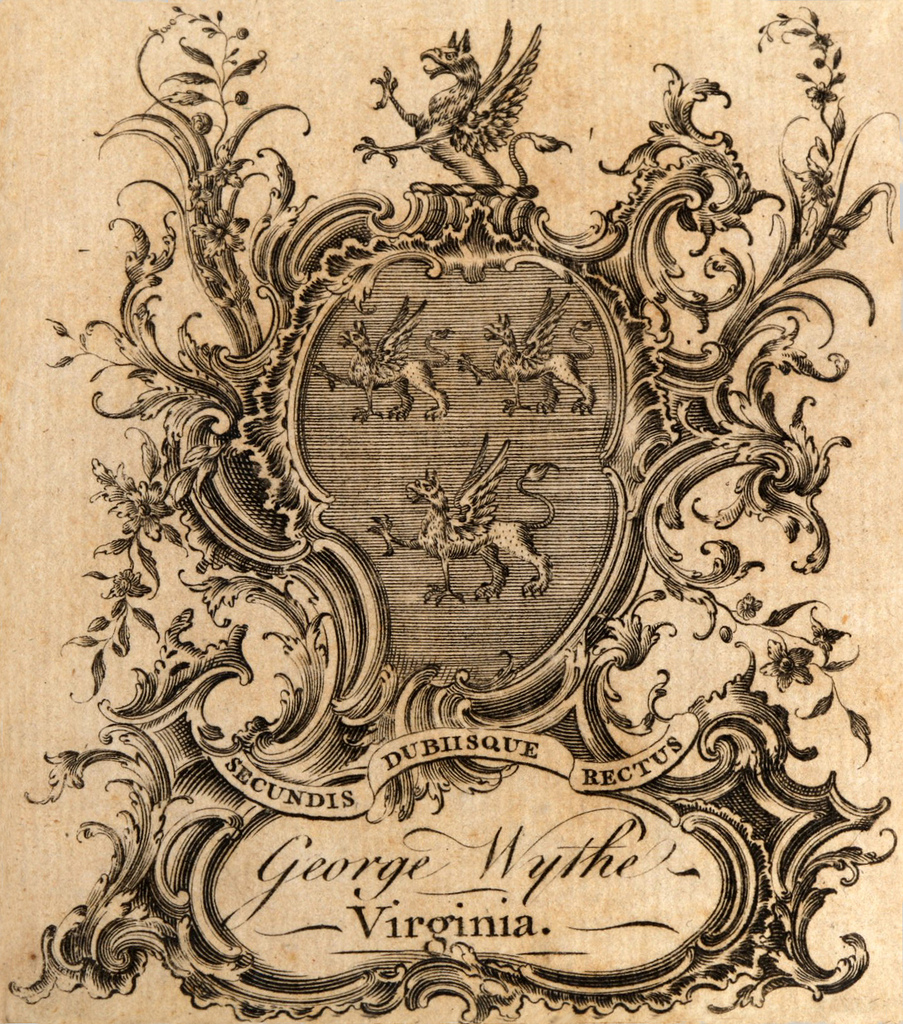The History and Practice of the High Court of Chancery in Which is Introduced, an Account of the Institution and Various Regulations of the Said Court; Shewing Likewise, the Ancient and Present Practice Thereof in an Easy and Familiar Method
by Sir Geoffrey Gilbert
| The History and Practice of the High Court of Chancery | ||
|
at the College of William & Mary. |
||
| Author | Sir Geoffery Gilbert | |
| Published | London: Printed by Henry Lintot; for J. Worrall; and W. Owen | |
| Date | 1758 | |
| Language | English | |
| Pages | [12], 347, [49] | |
| Desc. | 8vo | |
Sir Geoffrey Gilbert (1674–1726) was born in 1764 near Lamberhurst, Kent. After his legal education at the Inner Temple, Gilbert practiced for several years before being appointed a puisne judge of the Irish king’s bench in 1715. Gilbert would eventually go on to render an important decision in the case Annesley v. Sherlock by ruling that appeals from equity jurisdictions in Ireland belonged to the British (and not Irish) House of Lords. His career picked up significantly after this, and he would eventually go on to be knighted in 1725 and elected to the Royal Society in 1726. Gilbert died after a long illness on October 14, 1726.[1]
History and Practice of the High Court of Chancery was first published in 1756. It is divided into two major sections, "Forum Romanum" and "Lex Praetoria." "Forum Romanum" deals with rules of procedure in courts of equity, while "Lex Praetoria" focuses on the subject matter of equity. History and Practice of the High Court of Chancery was a hugely influential book over one hundred years after its publication. An American reviewer writing about it in the late nineteenth century stated, "all other works on equity, which have subsequently appeared may be, in some sense, considered as modifications of Lord Gilbert’s treatise." [2]
Covering a great variety of topics, "Forum Romanum" was considered the "most significant and respected work" of its time exploring changes in procedural doctrine.[3] It also contains one of the earliest explanations of rules regarding child advocacy in courts of chancery.[4] Evidence theory is also covered extensively, with Gilbert incorporating many characteristics of the continental approach to proof. [5]
"Lex Praetoria" is considered a less complete work than "Forum Romanum," though it is likely that neither were intended to be released to the public in the unfinished state in which Gilbert left them. "Lex Praetoria" has been described as giving a "limited and imperfect view of the doctrines of the Courts of Chancery, even so far as they had been established in his time."[6] It contains only a few of the general principles of chancery of the time, and several case illustrations to go with them.
In addition to serving as a substantial and influential work, History and Practice of the High Court of Chancery serves as a sort of historical marker. It, along with several other comprehensive treatises of its time, can be seen as a reflection of "the transformation of English legal science in the late seventeenth and early eighteenth centuries."[7]
Evidence for Inclusion in Wythe's Library
Both Dean's Memo[8] and the Brown Bibliography[9] suggest Wythe owned The History and Practice of the High Court of Chancery based on notes in John Marshall's commonplace book.[10]
As yet, the Wolf Law Library has been unable to procure a copy of Gilbert's The History and Practice of the High Court of Chancery.
See also
- The Law of Devises, Revocations, and Last Wills|
- The Law of Evidence
- The Law of Uses and Trusts
- Reports of Cases in Equity
- Wythe's Library
References
- ↑ M. Macnair, "Gilbert, Sir Jeffray (1674–1726)," Oxford Dictionary of National Biography (Oxford University Press, 2004- ), accessed February, 25 2015.
- ↑ Isaac Grant Thompson, "Book Notices," Albany Law Journal 10, (1874-75): 318.
- ↑ Geoffrey C. Hazard, Jr., "Indispensable Party: The Historical Origin of a Procedural Phantom," Columbia Law Review 61, no. 7 (November 1961): 1269.
- ↑ T. Crump, "The Guardian ad Litem - His Origin," Western Reserve Law Journal 4, no. 7 (December 1898): 179-80.
- ↑ Stephan Landsman, "From Gilbert to Bentham: The Reconceptualization of Evidence Theory," Wayne Law Review 36, no. 3 (Spring 1990): 1156.
- ↑ Joseph Story, "Story's Commentaries on Equity Jurisprudence," American Jurist and Law Magazine 15, no. 30 (July 1836): 364.
- ↑ Harold J. Berman and Charles J. Reid, Jr., "The Transformation of English Legal Science: From Hale to Blackstone," Emory Law Journal 45, no. 2 (Spring 1996): 485.
- ↑ Memorandum from Barbara C. Dean, Colonial Williamsburg Found., to Mrs. Stiverson, Colonial Williamsburg Found. (June 16, 1975), 11 (on file at Wolf Law Library, College of William & Mary).
- ↑ Bennie Brown, "The Library of George Wythe of Williamsburg and Richmond," (unpublished manuscript, May, 2012, rev. May, 2014) Microsoft Word file. Earlier edition available at: https://digitalarchive.wm.edu/handle/10288/13433.
- ↑ Herbert A. Johnson, Charles T. Cullen, and Nancy G. Harris, eds., The Papers of John Marshall, (Chapel Hill: The University of North Carolina Press, in association with the Institute of Early American History and Culture, 1974), 1:43.
